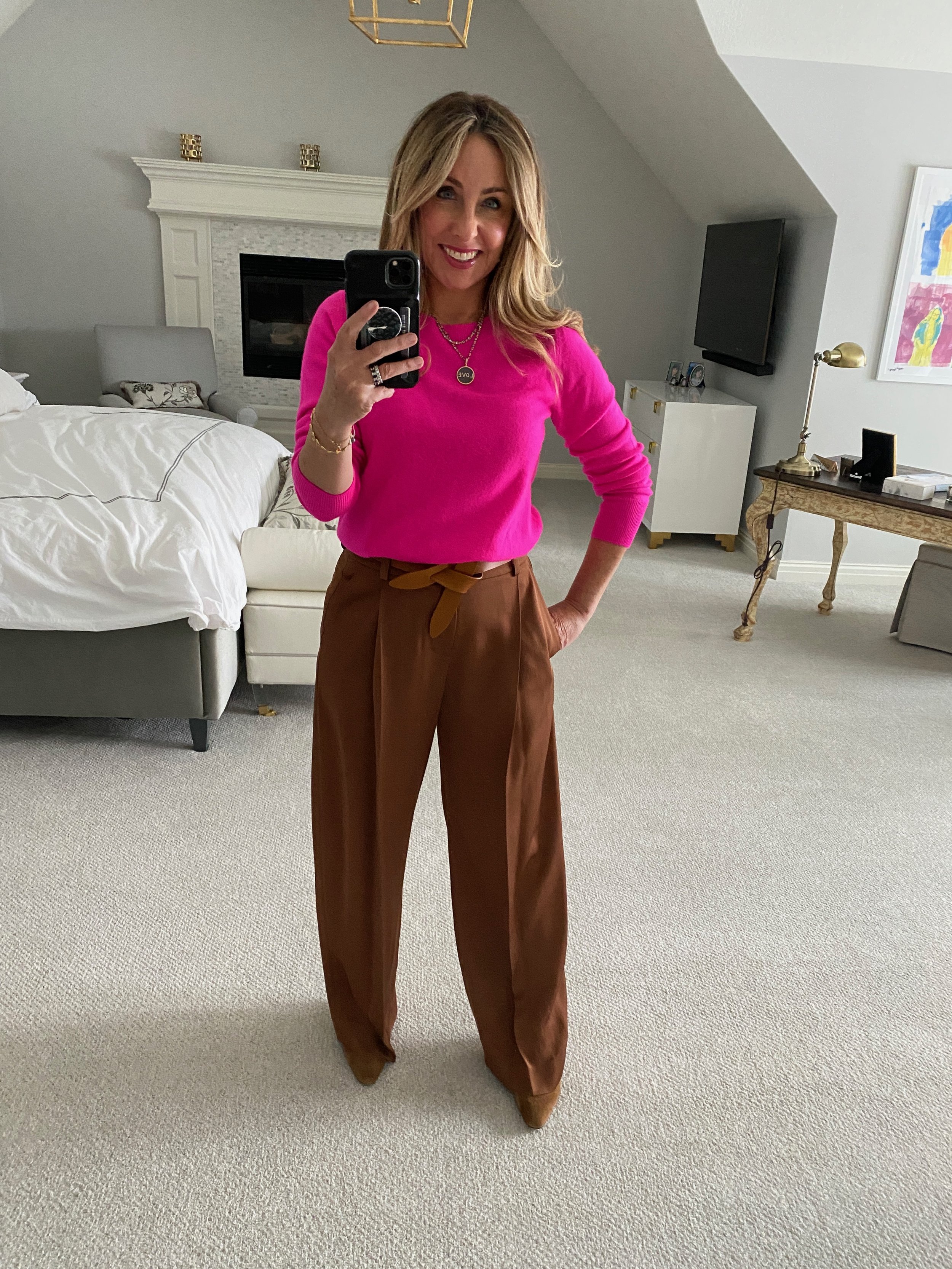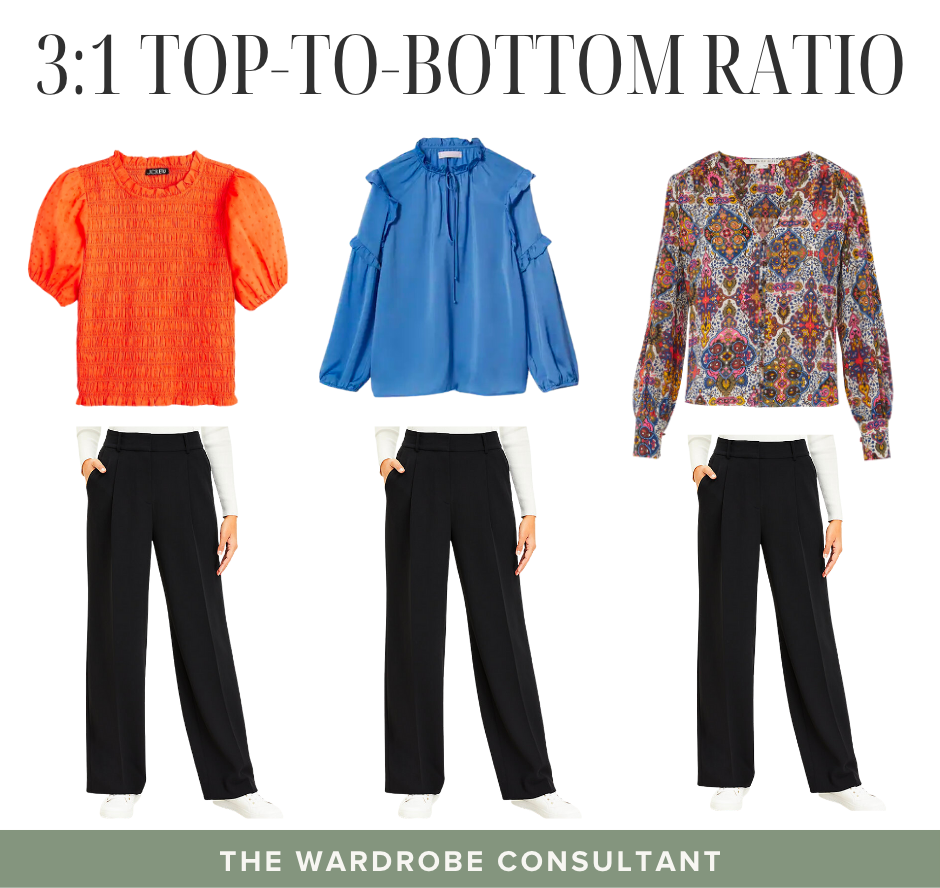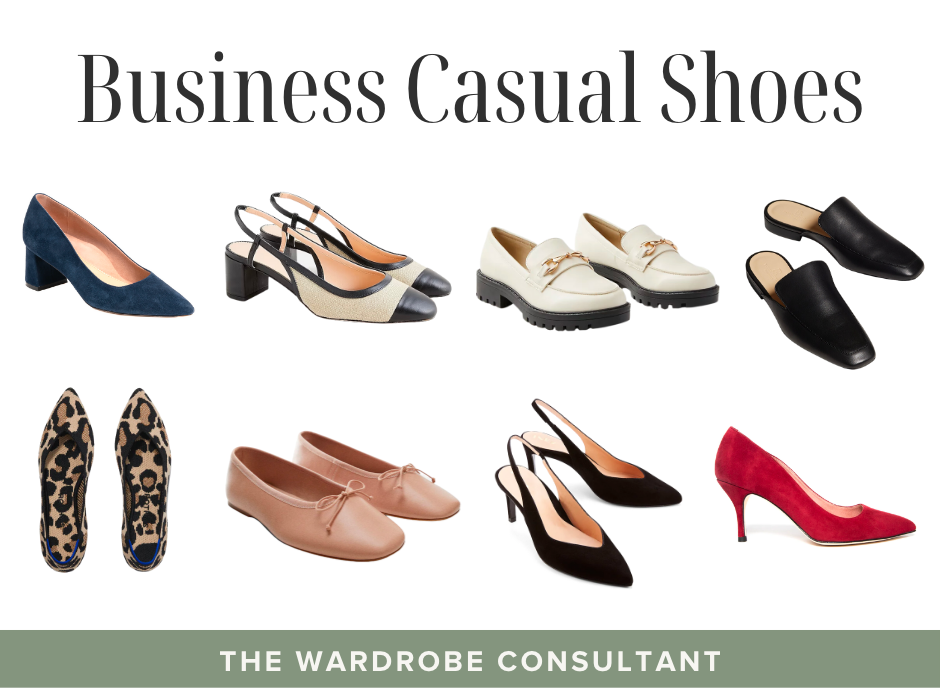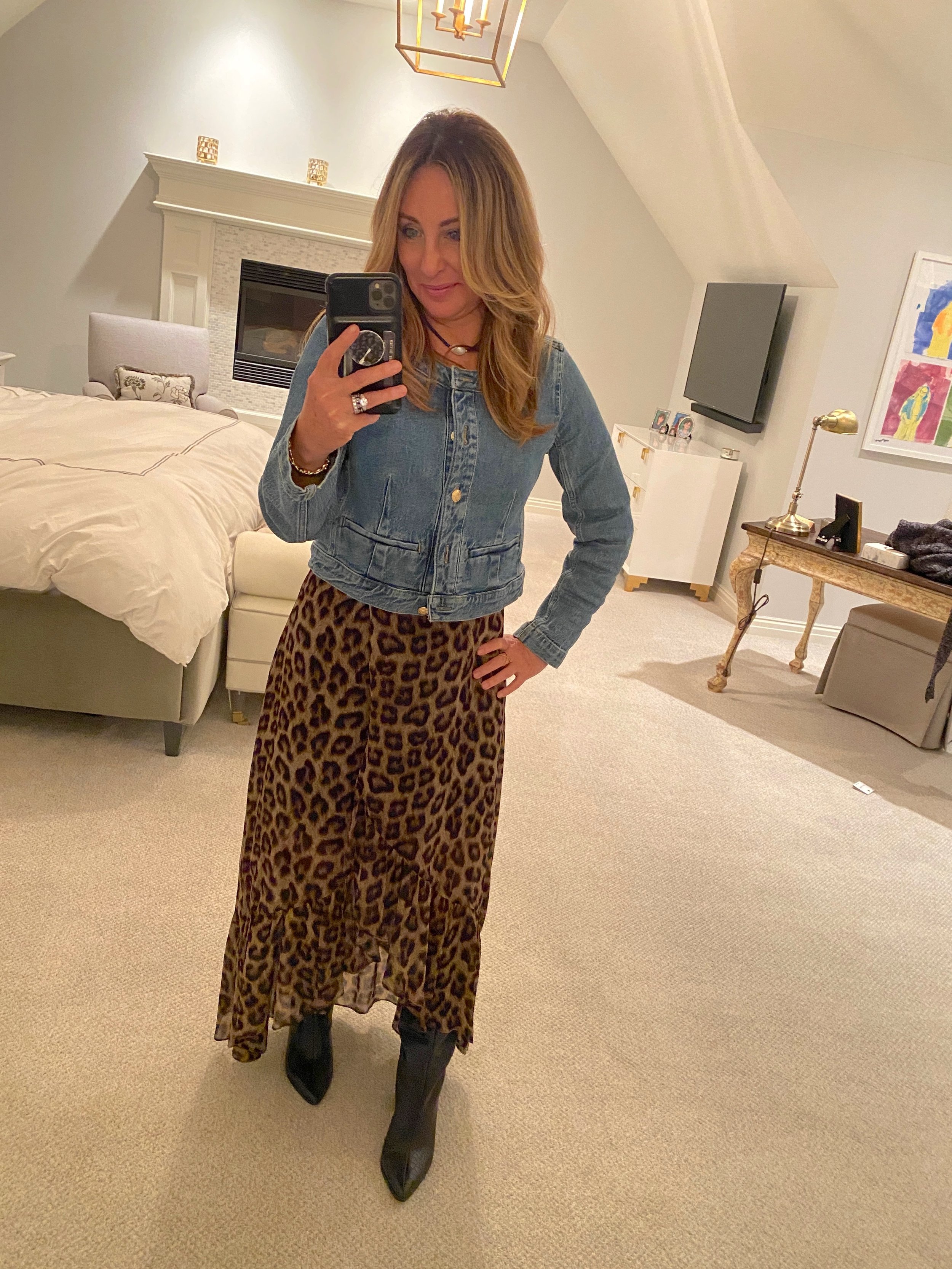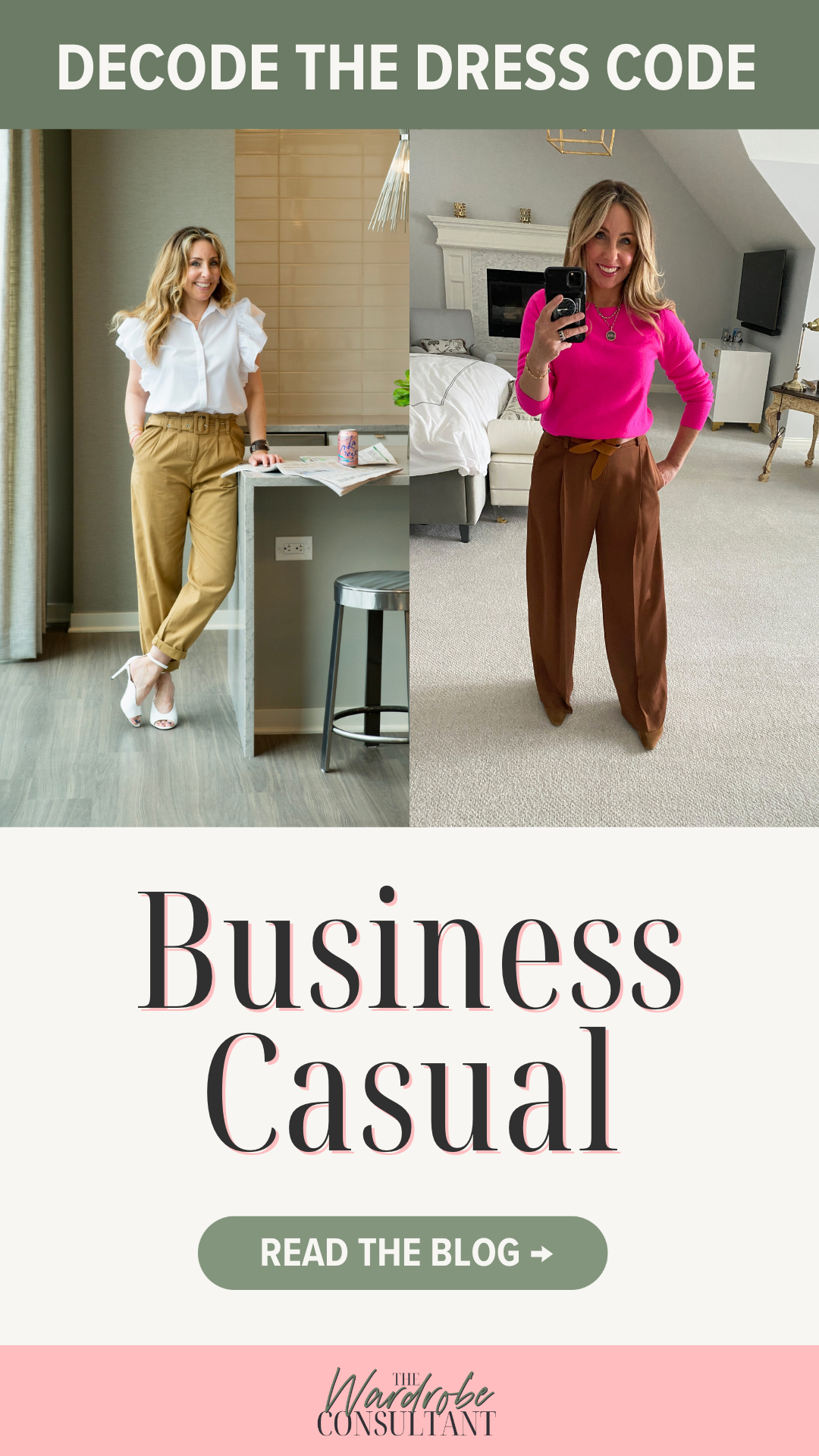Decode the Dress Code: Business Casual
Dress codes are theoretically supposed to make getting dressed easier. And yet, many of them just end up making things more confusing. And that sucks…
That's why in this new blog series, Decode the Dress Code, I'll be breaking down the key elements of different dress codes and providing tips and recommendations on how to dress for different occasions. This blog series aims to help women navigate the often-confusing world of dress codes.
As a personal stylist that specializes in styling real people for real life, I understand how important it is to feel confident and appropriate in your clothing, especially when it comes to professional settings.
In this particular blog post, I’m focusing on one of the dress codes that I am asked about most often: business casual. Because, let’s be honest, the name itself is an oxymoron - and the dress code is somewhat of a no-man's land. Meaning the “code” to figuring out this dress code is somewhat of a moving target.
A big part of the uncertainty comes from the fact that business casual can vary from company to company and even from department to department, so the rules are not set across the board. However, it's generally understood to mean a style of dress that is less formal than traditional business attire but still professional and polished.
What is Business Casual?
What does "business casual" actually mean? What are the key elements of this dress code, and how can you make it work for you?
Business casual is a relatively new dress code that emerged in the 1980s and 1990s in response to changing social and economic trends. Prior to this, traditional business attire, such as suits and ties for men and tailored dresses or skirt suits for women, was the norm in most professional settings (and the airport, do you remember that!?)
The idea behind the business casual dress code was to create a more relaxed and comfortable work environment, while still maintaining a professional appearance. The dress code was intended to reflect the changing attitudes towards work, with a focus on flexibility and creativity rather than strict conformity.
Initially, business casual was seen as a more casual version of traditional business attire, with men wearing dress slacks or khakis with a button-up shirt and women wearing skirts or dress pants with a blouse or sweater. However, as the dress code evolved, it became more relaxed and varied, with companies and industries setting their own standards for what constituted "business casual."
Today, business casual can mean anything from jeans and a nice blouse to a dress and flats. This can make it challenging to know exactly what to wear, but don’t worry, I’ve got ya…The secret is understanding the key elements of the dress code, because that knowledge can help you create a professional and polished look that is appropriate for your workplace.
Here’s a look into some outfits I’ve created for a real life business casual styling client!
Business Casual Key Elements
When it comes to business casual for women, there are a few key elements to keep in mind… And remember, as I am laying these elements out, I am starting by approaching it from a conservative business casual environment. Why? Because ALWAYS, (and I mean always) it’s better to err on the side of more conservative attire.
If I had to give only one piece of advice about this dress code it would be, if in doubt, go more business than casual. It’s like saying it’s better to be overdressed than underdressed. So too, it is better to be more professional than laid back when it comes to the workplace.
If you realize your business environment is open to more creativity, you can add that on. Think of it as adding spice to a recipe - start with the basics, and then add. Nothing is worse than an overly spicy (or salty) dish.
Business Casual Tops
Tops and blouses should be professional and modest, with no plunging necklines or bare shoulders. Avoid anything too flashy or revealing. Solid colors or subtle patterns are always safe (and they are necessary building blocks for every wardrobe). If your style personality embraces color and your workplace is open to it, I highly recommend this as a way to add some personality to your business casual ensembles.
Shop Business Casual Tops
Business Casual Bottoms
For business casual, you can wear slacks, skirts, or dresses that hit at or below the knee. Avoid anything too short or tight-fitting (these are work clothes not clubbing clothes). Ideally you want to make sure your clothing is comfortable, allows you to move easily and makes you feel confident. Business casual bottoms offer the most outfit versatility in “basic” colors like black, navy and gray.
Pro Tip:
I typically recommend a 3:1 tops-to-bottoms ratio because it is unlikely that a co-worker will remember the black pants you wore. People are generally more focused on the clothing that is closest to your face.
Shop Business Casual Bottoms
Business Casual Shoes
Shoes should be comfortable and professional-looking, with closed toes and heels no higher than three inches (again it’s for work, not for going out). Sneakers, flip-flops, and casual sandals are generally not appropriate for a business casual environment.
Heeled sandals are often up for discussion in the HR department. Some can be very appropriate for business casual. And others not so much. In some organizations they have landed on a no sandals policy because it is just easier. I think it’s like throwing out the baby with the bathwater - but again, I am not in HR and not the one making the rules. Don’t shoot the messenger.
Shop Business Casual Shoes
Business Casual Accessories
Keeping accessories simple and understated, with no flashy jewelry or loud patterns is the safe bet. You’ll never go wrong with a simple watch, stud earrings, and a classic handbag to help complete your look.
However, accessories are one of those things that can easily add some zest to your outfit. And adding a bold statement necklace to a simple blouse and slacks can take your business casual look from blah to wow.
Remember, the key to dressing for business casual is to create a polished and professional appearance without being too formal or stuffy. Stick to clean lines and classic styles, and opt for neutral colors like black, navy, and gray. With these elements in mind, you can create a business casual look that is both comfortable and professional.
Shop Business Casual Accessories
Business Casual Dress Code Variations
The key elements of business casual for women lay the foundation for the dress code. And then, there can be variations depending on your industry or company culture. Here are a few modifications to keep in mind:
Industry-specific variations
Depending on your industry, the expectations for business casual may be slightly different. For example, in a tech-focused field, you may be able to get away with more casual clothing (thanks Mark Zuckerberg) and in a creative industry your outfit could incorporate more color and express your creative side. And in a finance or law setting, you may need to dress more formally.
Company culture
Your company's culture can also impact what is considered appropriate for business casual. If your company has a more laid-back culture, you may be able to wear jeans and a blouse, while a more conservative company may require dress pants or a skirt.
Seasonal variations
Business casual can also be adapted for different seasons. In the summer, you may be able to wear lighter fabrics like linen or cotton, while in the winter, you may need to layer with a blazer or cardigan. If you’re not sure which topper to wear, check out this blog post about when to wear a blazer vs. a cardigan!
Modern interpretations and trends
As with any dress code, there are always modern interpretations and trends that can influence what is considered appropriate for business casual. For example, wearing sneakers with a dress or skirt has become more popular in recent years, but it's important to consider whether this is appropriate for your workplace before trying it out.
Ultimately, it's important to consider the expectations of your specific workplace and adjust your clothing accordingly. By paying attention to the industry, company culture, and seasonal variations, you can know that your business casual outfit is aligned with your organization and therefore feel confident .
Occasions and Events
Business casual is typically appropriate for a variety of work-related occasions and events, including:
Client meetings
Typically with external facing events such as meeting with clients, require more professional and put-together attire. A simple dress or skirt with a blouse, paired with comfortable heels or flats, can be a great choice. Think of this as a “dressy” business casual. Because when meeting with a client you are representing your company to the outside world and need to put your best foot forward.
Team meetings
Team meetings are internal facing so, you may be able to dress slightly more casually than for client meetings. The goal is to still look professional, but to be slightly dressed down. A pair of slacks or a skirt with a sweater or blouse would be a great combination.
Office parties
For office parties or social events, business casual is commonly the dress code of choice. Probably because folks are often coming right after work. Adding a festive top to your business casual ensemble can be a great way to transition your office attire to an out of office event.,
Networking events
When attending networking events, it's important to look professional and polished.This too is an external facing event - so it is an opportunity to step it up a notch. Adding a third piece to your outfit can help you feel effortlessly put together and therefore confident.
It's important to consider the specific occasion and associated dress code when choosing your outfit, as well as the expectations of your workplace. While business casual can be flexible, it's always better to err on the side of being too professional rather than too casual.
Style Tips and Recommendations
When it comes to styling business casual outfits, there are a few tips and recommendations that can help you create a professional and polished look:
Color combinations
Stick to neutral colors like black, white, gray, and navy, and pair them with a pop of color like red or green for a more interesting look.
Patterns and textures
Opt for subtle patterns like pinstripes or houndstooth, and mix and match textures like silk, cotton, and wool for added interest.
Fit and silhouette
Make sure your clothing fits properly and is tailored to your body, and choose silhouettes that flatter your figure.
Layering and accessorizing
Add interest or a bit of frosting to your outfit by layering with a blazer or cardigan, and accessorize with simple jewelry and a classic handbag.
The key to dressing for business casual is to balance comfort with professionalism.
Stick to clean lines, classic styles, and neutral colors, and pay attention to the details like fit, texture, and accessories. With these tips in mind, you can create a business casual look that is both comfortable and professional.



